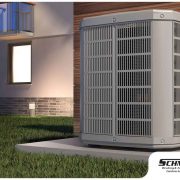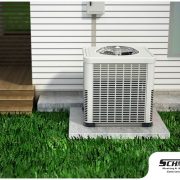Where NOT to Install a Ductless Mini-Split Unit
Choosing the ideal location for a ductless mini-split unit in your home is crucial for optimizing its efficiency and performance. While these systems offer flexible installation options, there are several critical areas where installing one could lead to suboptimal operation or even cause damage to the unit. Local heating repair and AC replacement expert Schmitt is here to guide you through the areas to avoid and also briefly touch upon some general placement tips to ensure your mini-split operates at its peak.

Areas To Avoid
Here are some of the areas in your home where the installation of the indoor and outdoor units of a mini-split unit isn’t feasible:
-
Locations Where Airflow Is Obstructed. It’s paramount to avoid areas where airflow might be obstructed. Placing units behind curtains, near furniture, or in spaces crowded with items can block air circulation, leading to poor performance and discomfort.
-
Direct Sunlight Exposure. Indoor units should not be installed on walls where direct sunlight can increase the operating temperature, causing the system to work harder. Similarly, outdoor units placed in direct sunlight will have decreased efficiency.
-
Excess Heat Sources. Keep both indoor and outdoor units away from sources of heat. For indoor units, avoid kitchen areas or electronics that generate heat. Outdoor units should be distanced from heat vents or machinery that could elevate the surrounding air temperature.
-
Unstable Surfaces or Incorrect Height Installations. Ensure the outdoor unit is installed on a stable, level surface to avoid misalignment or damage. Indoor units should be mounted at the correct height, ideally between six to seven feet above the floor, to ensure optimal air distribution and prevent the pooling of cold air.
-
Space Considerations. Both indoor and outdoor units require sufficient space around them for air intake and exhaust. For indoor units, a clearance of at least 12 inches from adjacent walls is recommended for proper airflow. Outdoor units should have clearances as specified by the manufacturer, usually around 24 inches on all sides.
General Placement Tips
When installing a ductless mini-split system, local heating and AC repair and replacement technicians adhere to a few placement principles that can significantly impact the system’s effectiveness:
-
Good Airflow. Choose installation locations that allow for unobstructed airflow around the indoor unit, as this is essential for efficient heating and cooling distribution.
-
Room Size and Unit Size Compatibility. The capacity of your mini-split should match the size of the space it’s intended to condition. An HVAC professional can help determine the appropriate size.
-
Away from Windows and Doors. Install units away from direct drafts from windows and doors to prevent loss of conditioned air and avoid exposure to direct sunlight or external temperature fluctuations.
-
Accessibility for Maintenance. Position both indoor and outdoor units in locations where they can be easily accessed for maintenance, ensuring long-term efficiency and performance.
Optimizing Your Mini-Split Placement for Efficiency and Longevity
By avoiding the critical areas mentioned and following the general tips for mini-split placement, you can rest assured your system operates efficiently and lasts longer. Installation sites should be chosen to avoid performance issues like uneven heating or cooling, increased energy consumption, and potential system damage.
For all your HVAC repair and replacement needs, turn to Schmitt Heating & Air Conditioning. Our team can assess your specific needs and ensure your mini-split system is set up for optimal performance. Call us at (415) 689-7849, or fill out our contact form to request a service.















Leave a Reply
Want to join the discussion?Feel free to contribute!